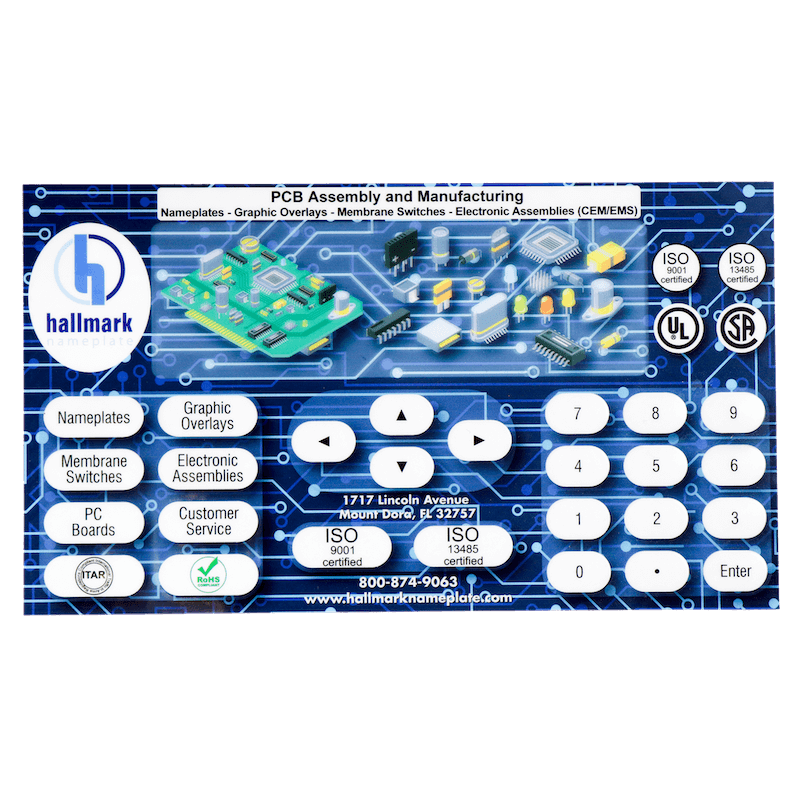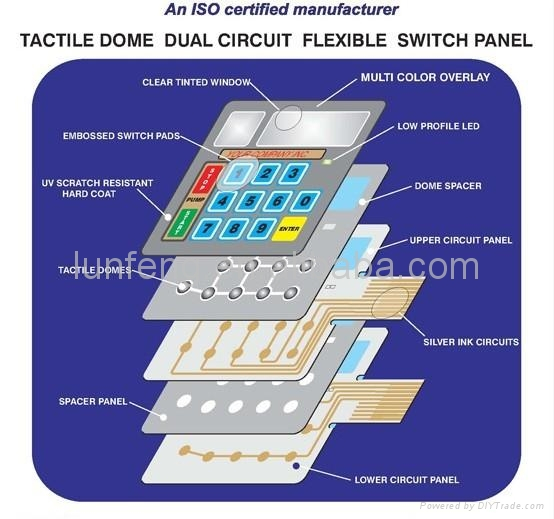Membrane Switches: A Cost-Effective Solution for Product Interfaces
Membrane Switches: A Cost-Effective Solution for Product Interfaces
Blog Article
Recognizing the Relevance of Membrane Switches in Interface
Membrane switches are essential components in the style of reliable customer interfaces, helping with not just performance however also enhancing visual allure and individual communication. As we explore the future trends and various benefits connected with Membrane innovation, it comes to be clear that these buttons are extra than simply parts; they represent a convergence of advancement and functionality.
What Are Membrane Switches?

The spacer layer, which consists of adhesive homes, allows for the splitting up of the circuit layer from the overlay, making sure that the button stays in a non-activated state up until pushed. When pressure is related to the overlay, it presses the spacer layer, connecting the gap and completing the circuit in the underlying layer. This design not just lowers the physical area required for conventional mechanical buttons but also boosts the resilience of the gadget, as Membrane buttons are typically immune to dirt, wetness, and various other ecological elements.
Typically found in applications varying from consumer electronic devices to clinical devices, Membrane switches are indispensable to contemporary innovation, offering a easy to use and effective user interface that aligns with contemporary layout needs.
Advantages of Membrane Switches
While numerous switch innovations exist, Membrane Switches deal unique benefits that make them particularly desirable in various applications. Among the primary benefits of Membrane buttons is their portable layout, which enables space-saving executions in tools where realty is limited. Their thin account not just boosts visual allure however additionally promotes light-weight construction.
Another significant advantage is their resistance to environmental elements. Membrane buttons are usually secured against wetness, dirt, and impurities, making them optimal for use sought after settings, such as medical tools and industrial tools. This resilience extends the lifespan of the button, lowering upkeep prices and enhancing integrity.
Additionally, Membrane buttons can be tailored to fulfill specific layout demands, including one-of-a-kind graphics and shades that improve user interaction. Their tactile feedback options can additionally be tailored to provide a rewarding individual experience. Additionally, Membrane switches are cost-efficient, especially in high-volume applications, as they can be produced successfully.
Applications in Various Industries

In the customer electronic devices industry, Membrane buttons prevail in devices such as microwaves, cleaning makers, and push-button controls. Their tactile responses and aesthetic options enhance user experience while giving a streamlined, modern look. Additionally, automotive producers utilize Membrane switches in dashboard controls and infomercial systems, where room is restricted, and user involvement is crucial.
Moreover, the industrial sector leverages Membrane buttons in control panels for equipment and equipment, permitting user-friendly procedure in commonly severe settings. Their resistance to chemicals and dampness makes sure longevity and reliability in these applications. In general, the versatility of Membrane Switches adds substantially to their prevalent use, making them indispensable in different technical domain names.
Style Factors To Consider for Membrane Switches

When making Membrane switches, numerous vital considerations should be taken into account to make sure ideal performance and customer experience. The option of materials is essential; picking durable, high-grade substratums can enhance the switch's longevity and resistance to environmental elements such as moisture and temperature level changes.
Secondly, the layout of the graphic overlay should prioritize quality and simplicity of use. Symbols and message should be readable, and the design should help with user-friendly interaction (membrane switches). Furthermore, responsive feedback is necessary; integrating a responsive dome or various other mechanisms can boost the individual experience by supplying physical confirmation of activation
An additional crucial variable is the button's electrical efficiency. Designers should make her explanation certain that the conductive traces are appropriately created to lessen resistance and avoid signal interference. This includes examining the needed actuation pressure and guaranteeing compatibility with the electronic components they will interface with.

Future Fads in Membrane Technology
As modern technology remains to breakthrough, Membrane buttons are positioned to evolve considerably, driven by advancements in materials and manufacturing strategies. One arising pattern is the incorporation of innovative products, such as conductive inks and adaptable substratums, which enhance longevity and decrease the total weight of Membrane switches. These products not only enhance the responsive reaction but additionally enable the layout of buttons that can withstand harsher ecological conditions.
Moreover, the integration of touch-sensitive technologies is changing typical Membrane Switches right into more interactive interface. Capacitive touch sensing units installed within Membrane button panels can supply a much more responsive and instinctive individual experience, aligning with the growing need for streamlined, contemporary designs in customer electronic devices.
Additionally, improvements in printing methods, such as digital and 3D printing, enable quick prototyping and customization of Membrane switches. This flexibility allows suppliers to respond faster to market demands and consumer preferences.
Lastly, sustainability is coming to be a considerable focus, with makers discovering green materials and processes. As these trends unravel, the future of Membrane innovation guarantees boosted capability, visual allure, and ecological responsibility, strengthening their role in sophisticated user interfaces throughout different industries.
Verdict
In final thought, Membrane Switches stand for a crucial element in the design of individual interfaces, incorporating performance with aesthetic adaptability. As developments in technology proceed, the advancement of Membrane buttons is expected to more refine individual interfaces, driving development and improving use in a progressively complex technical landscape.
Membrane switches are integral components in the design of reliable individual interfaces, helping with not only functionality but additionally enhancing visual allure and individual communication.Membrane Switches offer as a vital component in different user interfaces, promoting a seamless interaction in between individuals and electronic tools.While various button technologies exist, Membrane Switches offer distinct benefits that make them especially preferable in numerous applications.Furthermore, Membrane switches can be customized to meet certain style requirements, integrating special graphics and shades that improve individual interaction.In verdict, Membrane official source Switches represent a vital part in the design of individual interfaces, integrating performance with aesthetic versatility.
Report this page